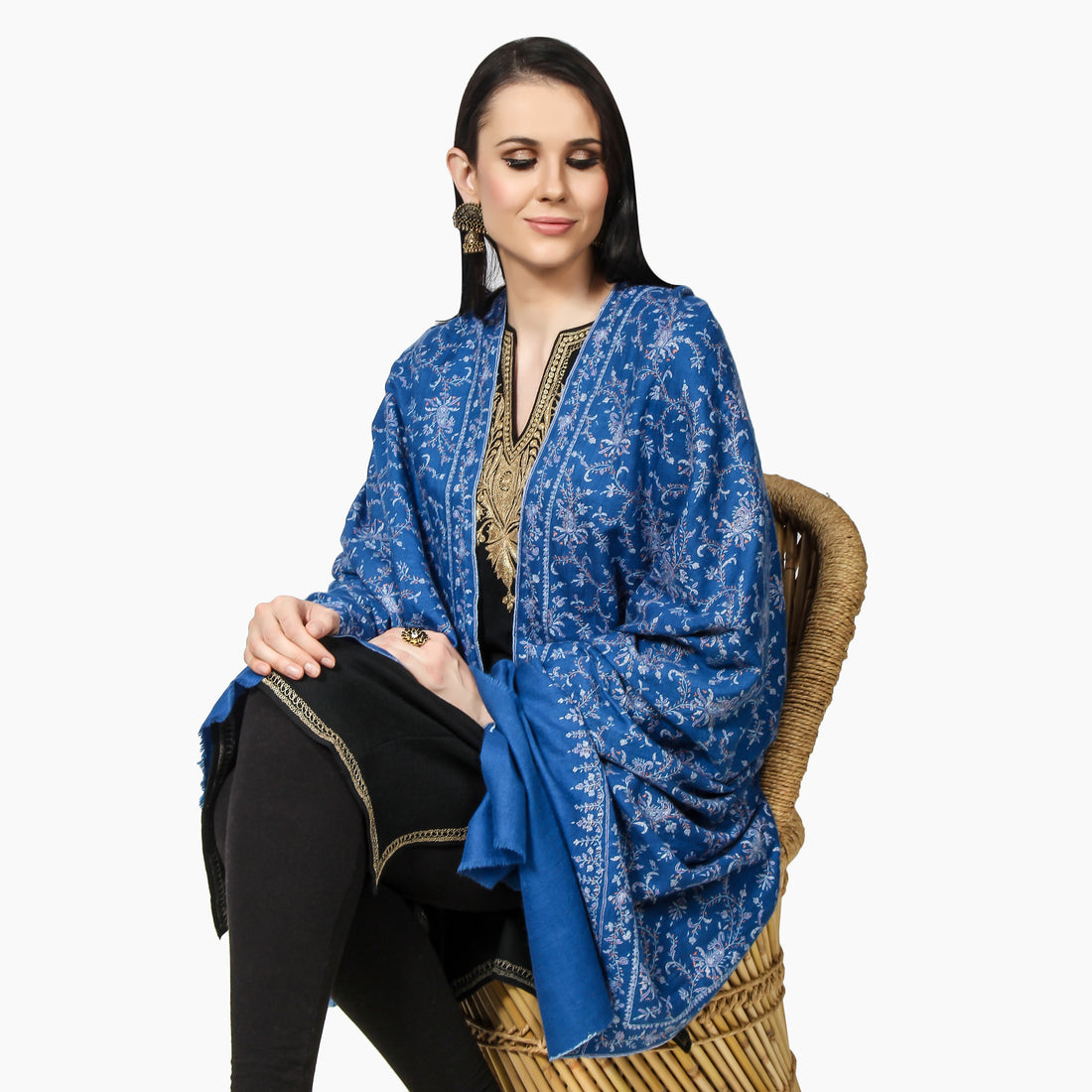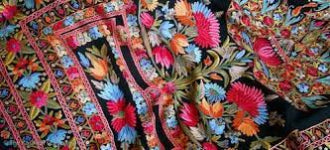
The Everlasting Glory of Pashmina Shawls
Share
Introduction
Pashmina shawls have a rich history and an enduring legacy that transcends generations. These exquisite pieces of craftsmanship have been cherished for centuries, and their timeless allure continues to captivate people all around the world. In this article, we will explore the fascinating journey of Pashmina shawls, from their origin in the Himalayan region to their global recognition as a symbol of luxury, warmth, and elegance.
The Origin of Pashmina
Pashmina, often referred to as "soft gold," is a type of fine cashmere wool that is meticulously handwoven into shawls and scarves. Its origins can be traced back to the Changthangi plateau in the Himalayas, primarily in the region of Ladakh and Nepal. The word "Pashmina" itself is derived from the Persian word "Pashm," meaning wool. The cold, harsh climate of these high-altitude areas is ideal for producing the world's finest, softest wool.
The Craftsmanship Behind Pashmina Shawls
Pashmina shawls are not just products; they are masterpieces born from the skillful hands of artisans who have been perfecting their craft for generations. The creation of a Pashmina shawl is a labor-intensive process that involves several intricate steps.
1. Wool Harvesting
Pashmina wool is derived from the underbelly of the changthangi goat, specifically from the neck and chest area. This wool is ultra-fine and incredibly soft, making it the ideal material for Pashmina shawls.

2. Spinning
Once harvested, the wool is carefully hand-spun into yarn. This process is crucial in maintaining the softness and purity of the fiber. The yarn is so delicate that it can pass through a ring, earning it the nickname "ring shawl."

3. Weaving
The weaving of Pashmina shawls is a skill that has been passed down through generations. Artisans use traditional handlooms to create intricate patterns, from classic paisleys to contemporary designs.

4. Dyeing
The natural color of Pashmina wool is an elegant creamy white, but it can be dyed into a multitude of colors. Traditional dyes made from natural sources are often used to preserve the authenticity of the craft.
5. Embroidery
Some Pashmina shawls feature exquisite hand embroidery, further elevating their beauty. These intricate designs add a touch of sophistication and are often inspired by local culture and traditions.

The Luxurious Appeal of Pashmina
Pashmina shawls are synonymous with luxury and elegance. Their unmatched softness and warmth have made them a symbol of opulence. Here are a few reasons why Pashmina shawls continue to be treasured worldwide:
1. Unparalleled Softness
Pashmina shawls are renowned for their unparalleled softness. When you drape one over your shoulders, you can instantly feel the gentle embrace of the world's finest wool.
2. Lightweight and Warm
Despite their delicate appearance, Pashmina shawls provide exceptional warmth. The fine fibers trap air efficiently, creating an insulating layer that keeps you cozy in colder weather.
3. Versatility
Pashmina shawls are incredibly versatile. They can be worn with both casual and formal attire. Whether you're attending a gala event or going for a leisurely stroll, a Pashmina shawl adds a touch of sophistication.
4. Timeless Elegance
Pashmina shawls are timeless fashion accessories. Their classic designs and understated elegance ensure they never go out of style. They are passed down through generations as family heirlooms.
5. Exquisite Craftsmanship
Each Pashmina shawl is a testament to the skill and dedication of the artisans who create them. The combination of traditional techniques and artistic innovation makes every piece a work of art.
Caring for Your Pashmina Shawl
To ensure the everlasting glory of your Pashmina shawl, it's essential to care for it properly. Here are some tips to maintain its beauty and quality:
1. Gentle Cleaning
Pashmina shawls should be hand-washed with a mild detergent in cold water. Avoid wringing or scrubbing to prevent damage to the delicate fibers.
2. Drying
Lay your Pashmina shawl flat on a towel to dry. Avoid hanging it, as the weight of the water can stretch the fabric.
3. Storage
Store your Pashmina shawl in a cool, dry place away from direct sunlight. To prevent moths, you can use natural repellents like cedar or lavender.
4. Occasional Airing
It's a good practice to air your Pashmina shawl from time to time to keep it fresh. Gently shake it to remove any dust or odors.
also read:- a detailed blog on how to care for a pashmina shawl
Pashmina Shawls in Modern Fashion
Pashmina shawls have not remained stuck in the past; they have seamlessly integrated into modern fashion. They are now available in a wide range of colors, patterns, and sizes to suit contemporary tastes. Designers around the world have recognized the timeless appeal of Pashmina and have incorporated these shawls into their collections.
1. Everyday Fashion
Pashmina shawls are no longer reserved for special occasions. They have become a staple in everyday fashion, with people wearing them to stay warm and stylish.
2. Red Carpet Glamour
Celebrities and fashion icons have been spotted on red carpets draped in the elegance of Pashmina. Their presence at high-profile events has elevated the shawls' status even further.
3. Gifting
Pashmina shawls make for exceptional gifts. They are tokens of love and appreciation, and they symbolize the timeless nature of the relationship.
The Ethical and Sustainable Aspect
Apart from their unparalleled beauty and craftsmanship, Pashmina shawls have another dimension that adds to their everlasting glory—their ethical and sustainable production.
Eco-Friendly Material
Pashmina wool is a sustainable resource. The goats are combed, not sheared, and their hair regrows, allowing for a continuous and renewable source of wool.
Supporting Local Artisans
The production of Pashmina shawls is a source of livelihood for numerous artisans in the Himalayan region. By investing in Pashmina, you're supporting their craft and helping preserve an age-old tradition.
Fair Trade Practices
Many organizations and brands are committed to fair trade practices when it comes to Pashmina production, ensuring that the artisans receive fair wages and work in safe conditions.
Conclusion
In a world of fast fashion and fleeting trends, Pashmina shawls stand as a testament to timeless beauty and craftsmanship. Their journey from the remote Himalayan plateau to international runways is a story of tradition, luxury, and sustainability. Whether you wear a Pashmina shawl to stay warm, make a fashion statement, or honor a cherished tradition, you're embracing a piece of history and contributing to its everlasting glory




